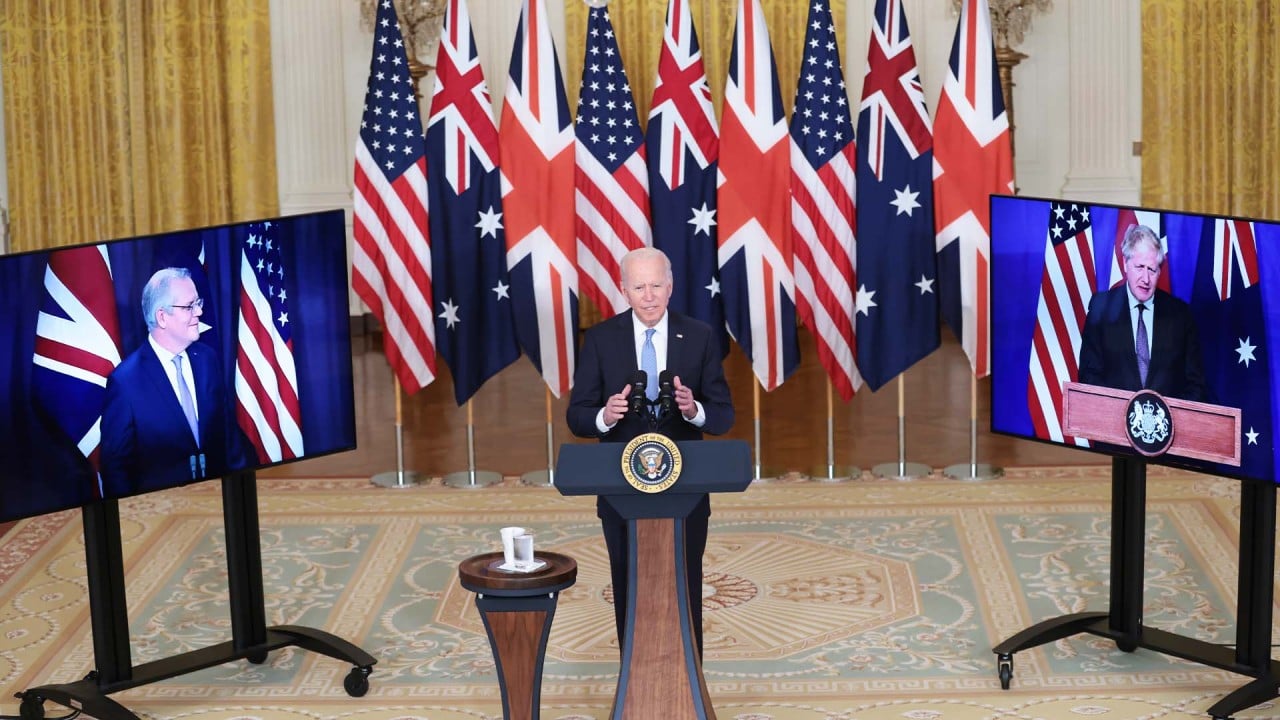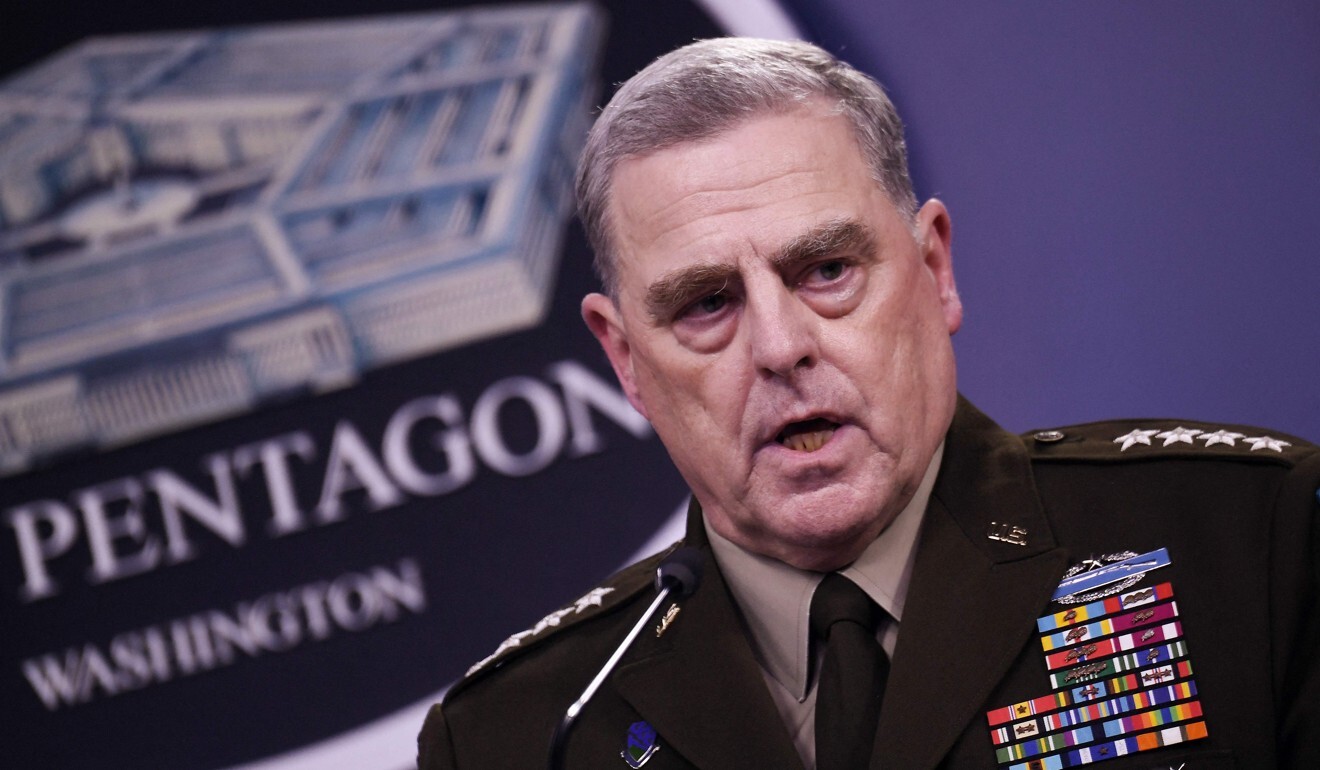
China’s nuclear arsenal is expanding faster than US military officials anticipated one year ago, says Pentagon report
- The report highlights growing concern in Washington about Beijing’s rush to build more nuclear weapons and other cutting-edge military technologies
- Chairman of the Joint Chiefs of Staff warns China’s recent advances in hyperspace missile technology represent a fundamental change in military balance of power
The report highlights growing concern in Washington about Beijing’s rush to build more nuclear weapons and other cutting-edge military technologies, widely viewed in the US capital as a growing threat to American power and global stability.
The Pentagon released the report just hours after Mark Milley, chairman of the Joint Chiefs of Staff, warned that China’s recent advances in hyperspace missile technology represent a “fundamental change” in the military balance of power – one that compels the US to pull off a similar leap in technological preparedness.

Milley added that the step change in military technology highlighted by China’s hypersonic missile prowess, artificial intelligence and robotics is the biggest since air power, mechanisation and radar were the decisive technologies that were used throughout World War II.
“If we, the United States military, don’t do a fundamental change to ourselves in the coming 10 to 15 to 20 years, then we’re going to be on the wrong side of a conflict,” he said.
According to the Pentagon report, China’s nuclear arsenal has ballooned from an estimated number of “deliverable nuclear warheads” in the low 200s last year, and could reach 700 warheads by 2027 and then potentially 1,000 by 2030.
European lawmakers arrive in Taiwan ‘to offer support for our friends’
The State Department disclosed last month that the US nuclear arsenal had shrunk to 3,750 weapons by September 2020, down from more than 20,000 at the end of the Cold War.
“Regardless of the ultimate number of nuclear weapons it makes, the [People’s Republic of China] will probably continue to claim it is, like other nuclear powers, adhering to the minimum of nuclear weapons needed to protect its security interests,” the Pentagon report said.
China has rejected limits under international arms control agreements, arguing that the US and Russia with the largest stockpiles of nuclear weapons have the greatest responsibility to curb their arsenals.
The report, required by Congress under the financial year 2000 national defence bill, also said that China is implementing a “launch-on warning posture, called ‘early warning counterstrike,’ where warning of a missile strike leads to a counterstrike before an enemy first strike can detonate”.

03:51
US, UK, Australia announce ‘historic’ military partnership in Pacific
The Pentagon said its findings captured developments in China through December 2020. Since then, US military leaders have been alarmed by reported hypersonic weapons tests.
Milley clarified comments about China’s recent hypersonic tests being “very close” to a Sputnik moment, which refers to the 1957 launching by the Soviet Union of the world’s first space satellite. China and the US have been testing hypersonic missile technologies for several years, making the comparison inaccurate, he said.
“With China, we’re going to need a full panoply of conventional forces – air, land and sea – but also space and cyber,” he said, adding that the latter two concern him the most.
The Pentagon also warned that China is building at least three silo fields, where hundreds of silos will hold Beijing’s growing arsenal of intercontinental ballistic missiles, which can fly thousands of miles.
Chinese military holds live-fire drills in East China Sea amid Taiwan tension
In a separate report published this week, the Federation of American Scientists think tank said it had used satellite imagery to detect significant progress in the building of apparent missile silo sites in north-central China.
“For China, this is an unprecedented nuclear build-up,” the group said. “It raises questions and uncertainty about China’s minimum nuclear deterrent and policies.”
They added that China’s total intercontinental ballistic missile force could exceed Washington’s or Moscow’s in the foreseeable future.

The former formalised Washington’s diplomatic recognition of Beijing and allowed cultural, commercial and other unofficial relations between America and Taiwan, while the latter authorises US weapons sales to Taipei.
Asked when he thought Beijing’s military might “make a move on Taiwan”, Milley said such a scenario is not likely within the next two years.
“I don’t think that [such an attack] is likely in the near future, being defined as 6, 12, maybe 24 months, that kind of window,” he said. “Having said that, though, the Chinese are clearly and unambiguously building the capability to provide those options to the national leadership if they so choose, at some point in the future.
“The US government’s policy is that whatever issues Taiwan and the People’s Republic of China have, they resolve them peacefully, in accordance with the will of the people of the island of Taiwan, and the people of China,” he added. “Were just interested in a peaceful outcome.”



